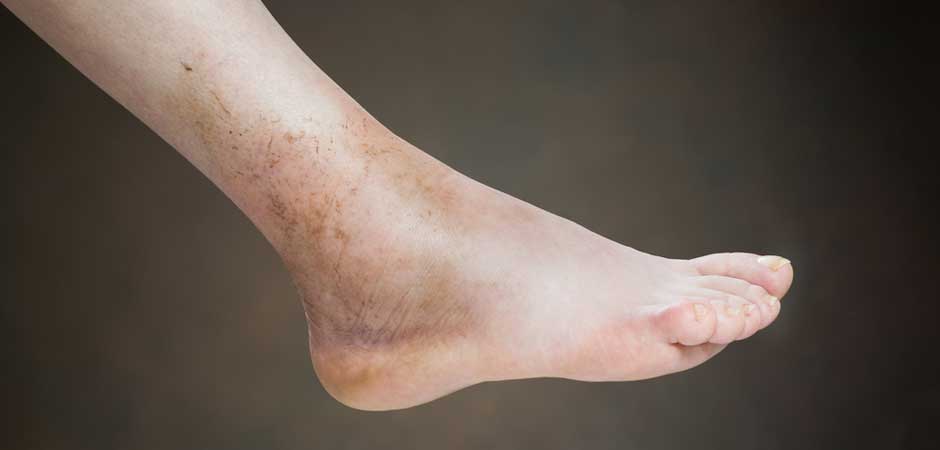
A malfunction of the nervous system that causes chronic, intense pain and related sensory abnormalities is called reflex sympathetic dystrophy. Other characteristics may include abnormal blood flow and sweating in the affected area, difficulty moving the muscles and changes in the structure of the tissues.
Reflex sympathetic dystrophy occurs in three stages:
- The initial acute stage may last up to a few months causing burning pain and excess sweating in the affected part of the extremity which may become warm and red. The joints of the affected extremity may also become painful. Patients may notice faster growth of their hair and nails.
- The second stage, also known as the dystrophic stage, may last up to a year. The affected extremity may be chronically swollen. Fingernails may become brittle. Pain and stiffness may spread up the extremity and along the same side of the body. Pain and stiffness may also spread to the opposite extremity.
- The third stage, also known as the atrophic stage, begins after the first year. The skin typically becomes stretched, shiny and pale. The muscles may deteriorate. It is possible for the pain to lessen but is chronic. The part of the body affected will be stiff, and the skin will be hypersensitive to touch. The likelihood of recovering movement lessens once this stage has been reached.
Reflex sympathetic dystrophy typically results from an injury or immobilization of part of the body such as a broken extremity being put in a plaster cast. When the part of the nervous system that controls blood flow and sweat glands in the extremity is disturbed and becomes overactive, reflex sympathetic dystrophy may occur. Sometimes there may be no apparent injury to the nerves, and a specific cause is often unknown. This condition may affect people of any age, including children. Depression often develops due to the long-term nature of this condition.
This condition is treatable if diagnosed early. Treatment may consist of painkillers, steroids, nerve block injections, physical therapy and occupational therapy. AOK spine and pain physicians aim to control the pain and enable the patient to regain or improve the function of the affected extremity.
